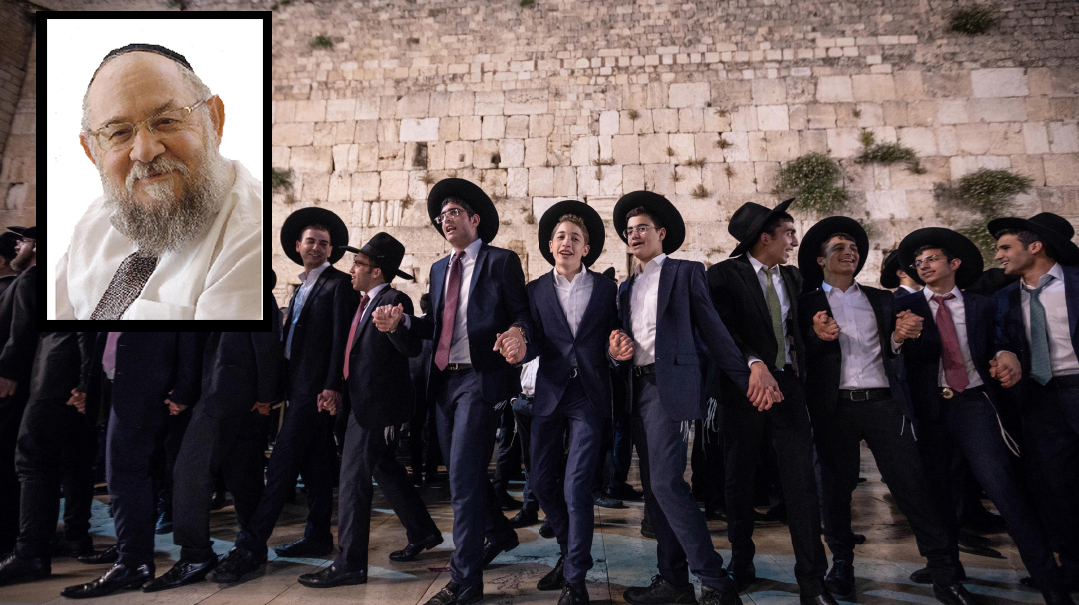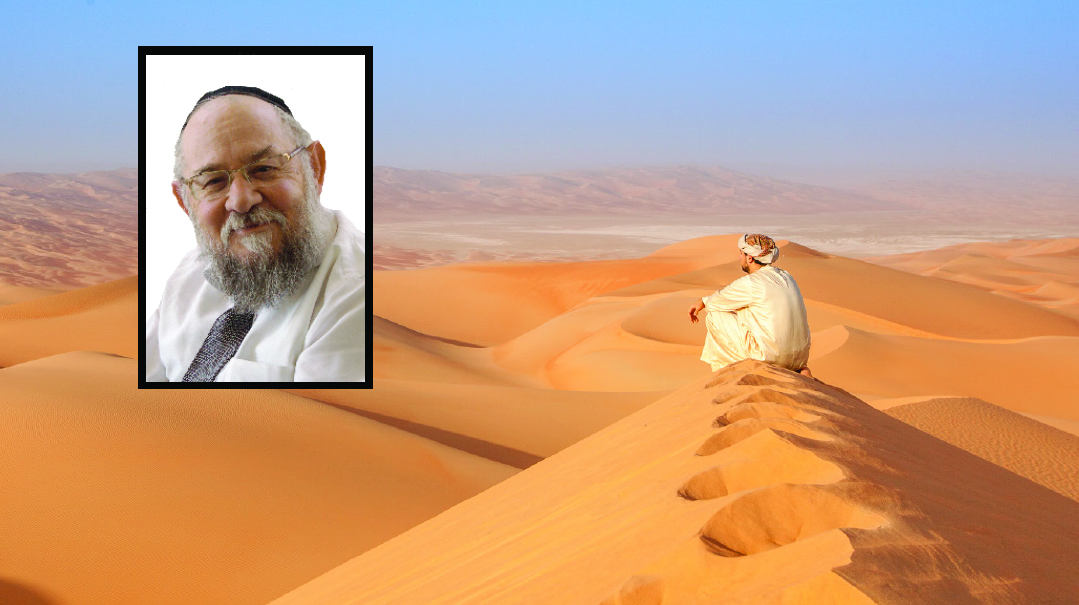Shattered Hopes


J ust weeks before the Jewish People had witnessed with their own eyes and ears the Divine Revelation and Har Sinai. What then could have prompted their rash desperate creation of a calf of molten metal and why did G-d endorse Moshe’s breaking the Tablets when he saw their frenzied state?
Parshas Ki Sisa recounts one of the most disturbing events in Jewish history an incident that turned into an indelible trauma that is synonymous with every act of rebellion since. It was such a shocking sin that it almost brought destruction on the Jewish People as Hashem said to Moshe: “My anger will be kindled against them and I will annihilate them” (Shemos 32:10). It was a transgression that damaged the most delicate fibers of the soul and we are feeling its repercussions to this day; so devastating were its effects that the suffering of galus is traced back to this one terrible mistake. We’re speaking of course about Cheit Ha’eigel the Sin of the Golden Calf.
From a distance of several millennia and an entirely different mindset it’s hard to understand or to judge what happened there. How could a people that stood at Har Sinai just a few weeks previously a people that heard and accepted from the mouth of G-d Himself the commandment “There shall be no other gods before Me. Do not make for yourself a graven image or any likeness ” make a calf of molten metal? How could it be that intelligent people of sound mind said to Aharon “For this man Moshe who took us out of Egypt we do not know what has become of him ” and set their gaze on an image of a calf of their own making and proclaimed “These are your gods Israel that brought you up from the land of Egypt”?
It’s particularly difficult to contemplate their tremendous excitement. Chazal themselves were shocked by it: “Rabi Yehuda bar Pazi said in the name of Rebbi ‘How can we read this and not be frightened? For a good cause [i.e. when the Jewish People contributed raw materials for the Mishkan] the Torah says ‘every generous-hearted soul ’ but for evil it says ‘The entire nation took off [their jewelry].’ ” (Yerushalmi Shekalim 1:1)
What a painful contrast! For the Mishkan it was only the generous of heart but for the Calf the entire nation handed over their gold. Were they that far removed from the truths of Sinai?
A number of classical commentators explain the psychological and philosophical motives for the sin of the Golden Calf. They show that the Jewish People did not actually transgress the prohibition of idolatry on a gross level. Yet the very fact that such an act was possible is a warning sign that a human being should not put his trust in himself his faith or his value system.
“Look ” the sign announces. “Look at this nation a people that had heard the Voice of G-d at Har Sinai so recently a people who had just experienced the miracles of Yetzias Mitzrayim and the wonders done for them in the Wilderness and already they went astray. Look at their heart still pulsating with the shock of the Revelation at Sinai which failed when faced with its first test. Plumb the depths of this episode and you will discover the secret of human nature.”
Man is a complex creature with twisting paths of thought full of inner contradictions — and no single event wondrous though it be will change his essential nature. Such an event might uplift him it might kindle his imagination but it will not turn him into another person. It won’t change his ingrained habits overnight; his basic outlook will remain the same. He is capable of change certainly but it will come only through a lengthy process of internalizing new values through constant and persistent self-education. If not then his self-centered desires and subconscious drives will overpower all the values he intellectually believes in.
A person might wave the banner of truth (don’t we all?) and tell his children sternly that it’s forbidden to lie yet in his everyday dealings he can lie and deceive left and right. He might believe in loving his fellow man but you’ll never see him yield to another driver looking desperately for a place to park. And he might believe in Hashem and remember Yetzias Mitzrayim — yet bow down to a calf in a moment of weakness and confusion.
This is human nature. This is the “rationale” behind his deeds when all is said and done. Such is the power of the yetzer.
And from here tragedy unfolds. Moshe Rabbeinu descends from the mountain. He is the leader of the Jewish People now displaced by a Golden Calf. In his hands are the Tablets of G-d’s Law. As he descends the mountain he sees shattered hopes a smashed dream a great retreat from light to darkness after the enormous spiritual gains of Har Sinai.
As he descends he also descends from his personal greatness. Because of them to whom he is bound with bonds of love he must let go of the greatness he drew from them. Hashem says to him (Berachos 3a) “Moshe! Step down from your greatness! It was only for their sake that I gave you greatness; now that they have sinned for what do I need you?”
Indeed Moshe’s high expectations of elevating his people to the heights are now dashed to the ground. Instead they pull him down down to the foot of the mountain.
Moshe Rabbeinu descending the mountain hears the joyous cries of the people surrounding the Golden Calf and is seized with rage. He takes the Luchos the miraculous tablets on which the Ten Eternal Commandments are engraved all the way through the stone yet appear the same of both sides the Tablets of the Divine Law and he breaks them.
“Under the mountain ” says the pasuk. At the bottom of the mountain the nadir to which they had fallen this people that had stood at the mountain at Har Sinai.
But at that very moment — the moment he broke them — hope was renewed. New hope sprang from those very shards.
Moshe’s rage did not stem from despair. Breaking the Luchos was not an act of helpless defeat. No. It was as constructive as can be. For those shattered Tablets opened the way to repair and restoration.
In fact Hashem Himself expressed approval of Moshe’s deed. According to the Gemara (Yevamos 6a) HaKadosh Baruch Hu said “Yasher kochecha more power to you for breaking them.”
When he beheld the scene of the ecstatic people encircling the Calf Moshe Rabbeinu understood their dreadful error. He realized that they who had lived in the galus of Egypt were still chained to the habit of venerating physical things for their own sake. They still ascribed absolute value sanctity power and divinity to physical objects to external symbols independent of the spiritual entity they represented.
And Moshe according to various commentaries was afraid.
He feared that after the frenzy over the Calf died down at some point they might turn the Luchos into an object of worship detaching them from their true essence from the Law inscribed on them and ascribing divine power to the stones themselves.
So in a bold quintessentially demonstrative act Moshe Rabbeinu shocked the people by smashing the Luchos before their eyes. Thus he showed them clearly once and for all that there is nothing holy and absolute but G-d. There is no absolute truth but His word which points the way which guides man and lifts him above the natural drives that subjugate him which refines his character and brings him close to Hashem Himself.
The lesson of shattering the Luchos was that no symbol has any kedushah of its own not even the Tablets of the Divine Law not even the Beis Hamikdash. No mountain no spring no social order nothing of this world. All these things are in the service of holiness at best. They are means and not an end. Their right to exist depends on their link to Hashem’s Torah which shows them the path.
The Luchos were broken at the bottom of the mountain. And the Law inscribed upon them was saved forever.
Oops! We could not locate your form.




